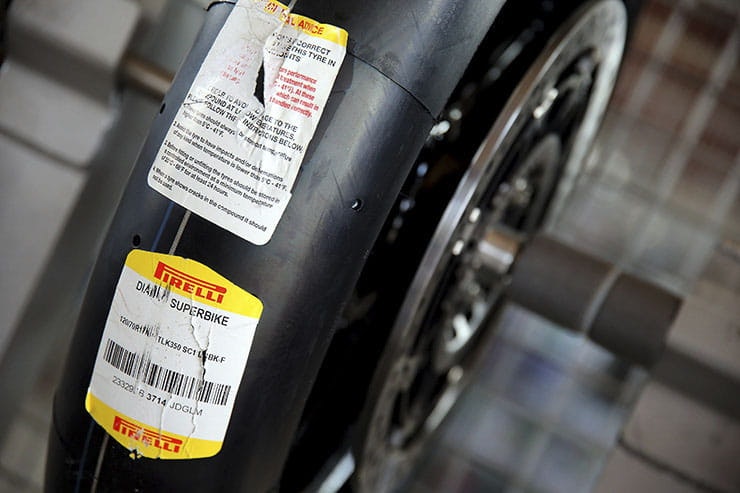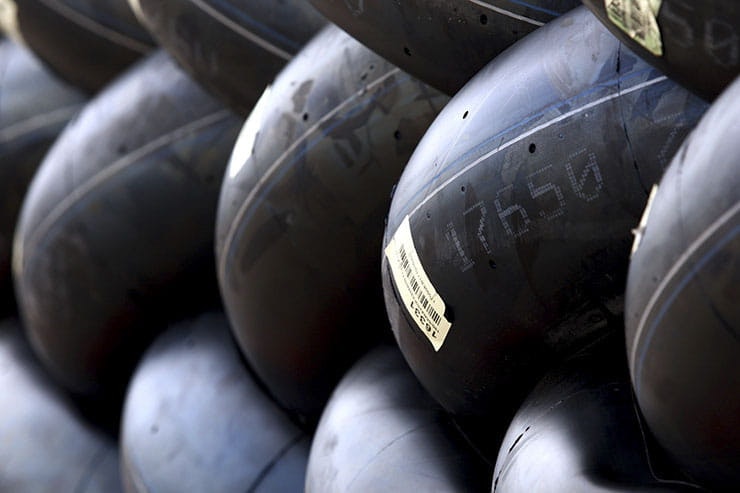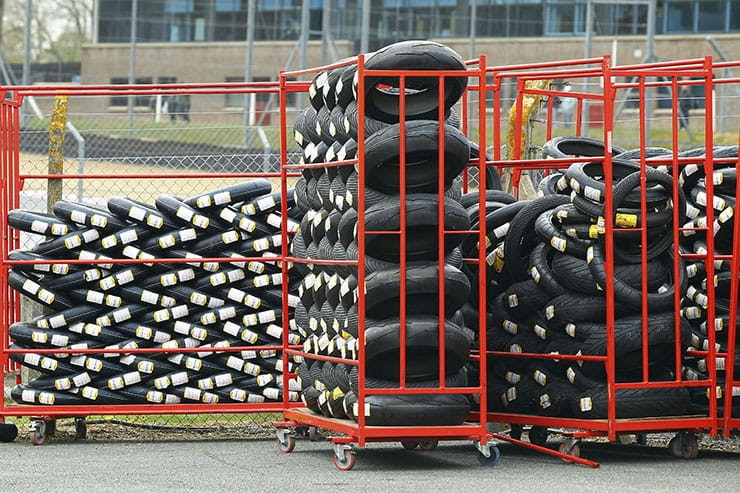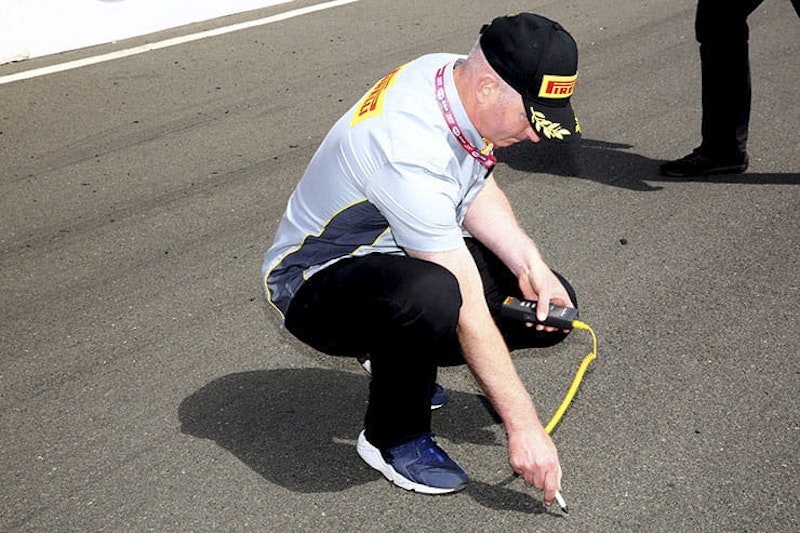British Superstock and Supersport switch to slicks
BikeSocial Road Tester
23.02.2023
Tyres are perhaps the single most important component of a race bike. Ask a racer if they’d prefer an extra 20bhp or a perfect tyre, and the answer will be the rubber every time. After all, a good and bad tyre choice can make the difference between podium and a gravel trap.
For the 2023 season, the unfailingly entertaining Pirelli National Superstock Championship moves from road-legal treaded tyres to Pirelli slicks, meaning we can expect some significantly faster lap times, with lap records expected to be broken every dry race weekend.
The adoption of tyres like those used in the premier class should also mean the Superstock class will more closely replicate BSB itself, making the jump up to superbikes far less daunting for both riders and teams.
What is changing?
The new Superstock tyre rule will allow the use of Pirelli slicks similar, though not identical, to the Pirelli rubber used in the British Superbike class.
Front options will be the same for both classes, while the Superbike teams will be allowed to use two softer compound rear tyres, which should in theory give more grip and faster lap times.
In more detail, that means the Superstock class will be allowed to use SC1 and SC2 Pirelli slicks, front and rear, while the Superbike class will have the option to run the softer SCX and SCO compounds on the rear only. Crucially, this also means for the first time both Superstock and Superbike machines will run the same size and compound front tyre.
Giorgio Barbier, Pirelli’s Motorcycle Racing Director, explained to BikeSocial, “We have been collaborating with the BSB championship since 2008, not only as a Sole Tyre Supplier but also as a sponsor and marketing partner. It is absolutely one of the most important competitions we participate in, and it is therefore natural that we want to offer to the championship, teams and riders the maximum in terms of support and product performance. As the performance of the motorcycles has grown significantly, the tyres too must evolve to ensure that riders can make the most of the potential of their machines, in the safest conditions. This explains the reason for the switch for the Pirelli National and Junior Superstock classes as well as British Supersport joining British Superbike by moving to DIABLO Superbike slick tyres. The performance advantage of slick tyres offer more rubber in contact with the asphalt resulting in better stability, increased grip and trajectory accuracy. It is therefore only fair that these classes of this top championship leverage the best Pirelli technology, the same available in the FIM Superbike World Championship which is fed by many riders who grew up in the BSB.”
Bennetts British Superbike Championship Director, Stuart Higgs, added, “Slicks are already used across the board in World Superbike and its support classes, so from a sporting context having riders on full racing tyres throughout our classes structure makes sense.”
What does it mean for the team and riders?
In theory, with greater grip from the race-developed Pirelli slicks, lap times should tumble, so too race times (the overall duration of a race). Also, the performance gap between Superstock and Superbike should narrow, which is important for rider and team progression.
Jake Dixon and Rory Skinner, both of whom will compete on the world stage in Moto2 this season, have come through the ranks of the British Superbike series. Looking slightly further back, former world champions Jonathan Rea and Cal Crutchlow are also both graduates of the BSB series. With both Superstock and Superbike riders now using similar tyres, the ability of emerging talents to graduate from the production class to domestic racing's full-fat premier category should be easier. And given that the MotoGP and World Superbike classes both run slick rubber, the move away from treaded road-legal rubber will give talented new British riders more exposure to the different set-ups and feel of slick rubber.
What do the riders think?
DAVEY TODD
2022 Pirelli National Superstock Champion moving to the BSB this year
Last year you won the Superstock championship, then jumped to BSB for the last round – was it a massive jump?
“Yeah, it was a massive, the two are worlds apart. The jump from Pirelli treads in Superstock to Pirelli slicks Superbike is huge. The Superbike front slick feels completely different from the Superstock front tread. They look similar but when you tip into the corner the slick feels very different. Initially, it doesn’t want to turn then dramatically it does! It feels like you are going to lose the front but you don’t because the edge grip is really good.”
Will both Superstock and BSB using the same front tyre make the set up easier in the future?
“Yes, a huge help. The power between the classes isn’t that different, and the chassis are so good in Superstock now – so it’s the feeling of the front that's the biggest difference. Now both bikes are running the same front slick, the step-over will be easier.”
What improvement in lap times can we expect in 2023?
“Last year's (treaded) rear tyre was a really hard compound, but we weren’t a million miles away in laps times between Superstock and Superbike. That will be even less in 2023, and at some of the rounds it could be really close.”
DAN LINFOOT
Has raced in both Superstock and Superbike and will be racing in the Pirelli National Superstock Championship this year
Will moving to slicks in 2023 be an advantage or disadvantage for you?
“For me, it’s a great thing as I’ve raced the majority of my life on slicks. The (treaded) tyre was good last year in Superstock, they defined the class, but when we move to slicks the times will be faster.”
Do you see lap records being broken?
“I think lap times will be faster on slicks, at some tracks this could be one second on a lap. Overall race times should also reduce; if you’re lapping a second quicker over 15 laps, that’s a big reduction in overall race time.”
Did you feel a noticeable difference last year between the slick in BSB and the treaded, road-legal rubber in Superstock?
“Yes, a big difference in the font. The slick gives more support and more grip which means you can brake harder and push against the front tyre. There’s also more grip when you release the front brake. The feel is different, some of this compound and some due to the different size.
On the rear, there is more grip from the slick: less spin and less sliding. The lean angle is a little more on the slick, too.”
Will the gap between Superstock and Superbike be smaller?
“It’s going to be interesting, as some of the top bikes in Superstock should be posting times good enough for the top 15 finish in Superbikes as the bikes will be much closer.
Thruxton could be close, which sounds daft as it’s a fast track. But the BSB bikes can’t use all their power there and I don’t think the superbike’s softer rear tyre option will last, so they should be much closer to the Superstock times! And the stock bikes can run a little traction.”
Quattro Group British Supersport moves to Pirelli slicks too
It’s not just the Superstock class moving to Pirelli slicks. For the first time, riders in the Quattro Group British Supersport Championship will have the benefits of race rubber rather than road-legal treaded race tyres.
In 2022, GP2 teams, which race against the production Supersport machines, were allowed to use slick tyres, but now the BSS riders will have similar, though not identical race rubber. Both GP2 and BSS will run the same SC1 or SC2 front tyres, with the same sizes front and rear, but the GP2 bikes will be allowed to run the softer compound SCO rear. Records should tumble.
LEE JOHNSTON
Fourth in last season's Quattro Group Supersport Championship
Now you can run slicks in BSS do you think it will make a huge difference?
“Honestly, I don’t know. We don’t have the power of BSB or Superstock bikes, so it may not make such a difference. I don’t mind the treaded tyre and, when it’s cold or damp, it makes more sense than a slick. The slick only works when the conditions are perfect. Ultimately, it will depend on the compound: if the slick is a softer compound, then the lap times will come down.”
Last year you were racing against GP2 bike on slicks, was it noticeable that they had more grip?
“It was, but they are also lighter with proper race chassis and race brakes – they are race bikes against road bikes so they should, in theory, be quicker anyway.”
Share on social media:



